-
Robin perched on the fence, looking at another robin out of frame. They’re regulars in our backyard.

-
The only way to win is not to play
In 1999, I rented Final Fantasy III1 for the Super Nintendo Entertainment System. Immediately overwhelmed by its complexity, I went scrounging2 for tips online and found a full-length guide someone had uploaded to a then-new site called GameFAQs3.
I printed (!) it out, took the little pile of papers upstairs to my game room, and referred to it frequently throughout my 33-hour playthrough. As of this writing, that guide is amazingly still up, with the seemingly immortal detail “Updated: 03/17/1995.”
The road to content creation
Untold amounts of online “content” have in the interim gone through their entire lifecycles of creation, adulation, monetization, resentment at their lack of expected clout-building, and finally destruction, across numerous platforms, some now-extinct and other lumbering on with their users clinging to their digital dinosaur limbs:
- MySpace was conceived, rose to dominance through autoplaying music and easily editable HTML, was bought by News Corporation, lost all value and most of its users, had all its pages purged, and tried a weak 2.0 relaunch.
- Facebook was borne out of Facesmash, went from Thefacebook dot com to sans-the, hawked Wirehog, introduced the NewsFeed, pivoted to video, and ultimately became uncool.
- Blogging went from a niche and technically daunting task to something trivially easy to get started with, having passed through the guts of Blogger, Livejournal, Typepad, Wordpress, and Substack.
Meanwhile, that humble FF3 text file, a relic of the Web 1.0 era when internet users were mostly sharing nice stuff with no brands to build or ads to run, has sat unchanged by its maker for 28 years, yet still helping untold ranks of gamers navigate a wonderfully complicated game—for nothing, monetary or otherwise salutary, in return. Almost as if its charitable, rather than commercial, purpose has let it outlast reams of clout-boosting content.
Granted, FF3 hasn’t been updated, either; it predated the era of DLC4 and live-service games. But this FAQ has never gotten so much as an SEO refresh, gone behind a paywall, or been used as a springboard for building—for its writer—a glitzy online reputation through a major social media following that’d then rake in millions in presumably inevitable ad revenue.
Its free, immediate availability indeed feels like an act of charity—and I mean that as a good thing, even though a lot of Extremely Online people today would take the opposite stance and say that such a giveaway is bad, that the author did unpaid labor for GameFAQs, that they should’ve been looped-in on the site’s ad monetization somehow, and that giving away free stuff is bad for brand reputation.
In other words: No freakin’ way we could comfortably deem the FAQ’s author a real Content Creator.
Content creation is gambling, not work
As a leftist, such arguments about not “working for free” are intuitively appealing. Labor deserves compensation. But is posting a type of labor? Is it a job? No, it isn’t.
I think we’re confusing the distinctive addictiveness of platforms such as Twitter and YouTube, when used in a personal capacity, with work.
They hook you with the prospect of lots of re-shares of your content and perhaps fame (!) and even maybe fortune (!!) from there, but inevitably they let you down, at which point—if you don’t just quit or resign yourself to the fact that social media posting is not a road to riches or even to subsistence wages—you feel compelled to either go even harder (see the entire right-wing-coded “rise n’ grind” economy) or to resign yourself to a more satisfyingly left-ish “I’m being exploited and I should be paid by the platform itself!” stance.
Either way, you see yourself working even though you’re (almost certainly) actually just bummin’ around, unless you’re a professional content marketer. And both mindsets center the nebulous concept of “content,” which implies something that’s:
- Hosted in someone else’s container: You’re on a stranger’s platform, whether that’s Twitter, YouTube, or somewhere else5, but contra most people’s understanding, that place is more like a casino than a workplace.
- Meant to be monetized: Related to the above, what you create is at its root designed to enrich “the house,” in this case, the platform owner, and this is obvious from the start or with a bit of cursory research. “Content creation” is risky like gambling, with lots of effort channeled toward dubious chances of remuneration.
- Constantly in need of more work: Once you start creating content on someone else’s farm6, you enter a doom loop of needing to work on greater amounts of it without seeing greater rewards for it—like a gambler needing to place continually bigger bets to sit out of a hole. Exhaustion and frustration (and maybe ruination) ensue. But as a Content Creator, you feel like you can’t give up, that fame is still close at hand with a few tweaks, that you’re in the correct fight.
On Substack, Brian Feldman has summarized the latter feeling well:
The pursuit of likes, followers, attention, fame, and money is framed as inherently good, or a noble struggle. To criticize one’s attempt to earn a living on social media is implied to be punching down and unspeakably rude. This discussion is often couched in vaguely populist, technical, and legalistic terms. A platform user’s “unpaid labor” and “intellectual property” is being “monetized” and “exploited” by the forces of “late capitalism,” and users are at the whims of “the algorithm” which “lacks transparency” — but if the participants in the platform’s “economy” were to band together, they could exert pressure through “collective action” in order to access the “profits” held in “creator funds” that are rightfully theirs. This is, when you think about it for like half a second, a myopic and stupid way to think about interacting with or informing other human beings, and yet it is the dominant mode.
Yes.
We’re internalizing the logic of “content” outside of its natural home in the marketing agency world, seeing every attempt at sharing a link, writing a blog, or posting a video on our own time as fundamentally a transaction—and along the way, indulging the quintessentially American fantasy that we’re all just temporarily embarrassed millionaires. We’re telling self-styled Content Creators that they’re right to gamble away their precious time and money, despite the overwhelming evidence that most of us can’t even come close to making social media activity into a real career—and the fact that treating another pull of the online notoriety slot machine as a noble act is just weird.
I get the impulse—the idea that with more posting, the right kind of posting, the 10 Tips for Better YouTube Discoverability, it’ll all work out and you’ll score a victory for labor over capital, and all without having to make content marketing your day job! But the source of your addiction isn’t your actual job, of course—if it were, it wouldn’t be so addictive!
Twitter (or any other megaplatform) isn’t your job
There are certainly people who’ve made social media content creation their life. But to see how rare this is, consider the following platforms and their macro trajectories, and how all of them point to the nature of these places as sites of charity, not labor:
- Twitter: It’s common to say that Twitter’s users are creating “free content” for it, implying that it should be paying them, not the other way around. But no one, not even Twitter itself, has ever made much money from Twitter. Despite the number of site visits, the company at its peak generated about as much annual revenue as Olive Garden. Even huge accounts are often forthrightly desperate for money and support, revealing that social media fame has no direct path to money. It’s a bad, sleepy casino, or, if you prefer, a bar—a place to hang out with no expectation of becoming galactically rich and famous, but to instead dispense jokes, threads, and links as charity.
- Bluesky: Twitter’s would-be successor is small but its early adopters—who’ve gotten invites via their own prominence or adjacency to someone else’s—are eager to “scale” it, and with that scale…do what, exactly? Bluesky is so clearly just a place to shitpost without worrying about Elon Musk twiddling with his dials. It has no concrete plans for either better moderation or monetization, let alone some way for Content Creators to mine its veins. It’s just a place to have fun! Or it would be, if engagement weren’t through the floor, despite its users snootily acting like Mastodon is the network with those problems.
- Mastodon: Mastodon has no illusions of being a place of potentially remunerative labor. There’s no ads, no way to algorithmically boost your content, no revenue sharing. These features are some of the big reasons I think clout-chasing Bluesky users dislike it—there’s no clout to be bought, no audience to upsell, so the gambling of time and money on grind-like content creation immediately reveals itself as foolish. Better to just relax and share some cool links about the old AppleVision monitors.
- Reddit: Reddit users, as Feldman points out in their article, seem to recognize that what they do is charity. They post helpful tips and links that wouldn’t make it through the Google SEO ringer without adding a special “Reddit” operator to the query. They’re not workers destined for slices of revenue, and they know it. Their rebellion against Reddit’s recent API changes shows more than anything that the charitable (free) sharing of Reddit’s posts across the open web, rather than the transactionalism that Reddit leadership envisions, is what they value most.
Social media may fulfill a basic need for community, but trying to win at it, rather than enjoy it and share knowledge freely without the expectation of every bit going into a spreadsheet invoice, is going to always be disappointing. The only way to win is not to play—and to instead find actual games and other activities that you like. The best parts of the internet—Wikipedia, the Fediverse, and the Internet Archive—are essentially volunteer-run charities that survive on donations. That’s the model for enjoying your time online.
-
Know as _Final Fantasy VI _in Japan. The second, third, and fifth installments of the ironically never ending franchise had not been localized in North America at this time. ↩︎
-
Google existed but IIRC I hadn’t found out about it yet. So I probably used Dogpile? ↩︎
-
GameFAQs’ design has roots in Usenet, where “frequently asked questions” pages were common as repositories of knowledge in the days before easy web search. ↩︎
-
Downloadable content. Not long after FF6, Nintendo did experiment with some early DLC with its Satellaview add-on for the SNES, though. ↩︎
-
It’s funny how the big, centralized platforms have taken us back to the days when the internet was considered a discrete location rather than a continuous medium. ↩︎
-
A “content farm” is an organization that churns out content at industrial scale in an attempt to capture Google traffic. I highly recommend this rundown of how they work. ↩︎
-
My nephew’s trying to learn Mario Paint, seen here running off of the original cart in 1080p, 8:7 aspect ratio via an Analogue Super NT. Using a Hyperkin optical mouse instead of the official Nintendo ball mouse.
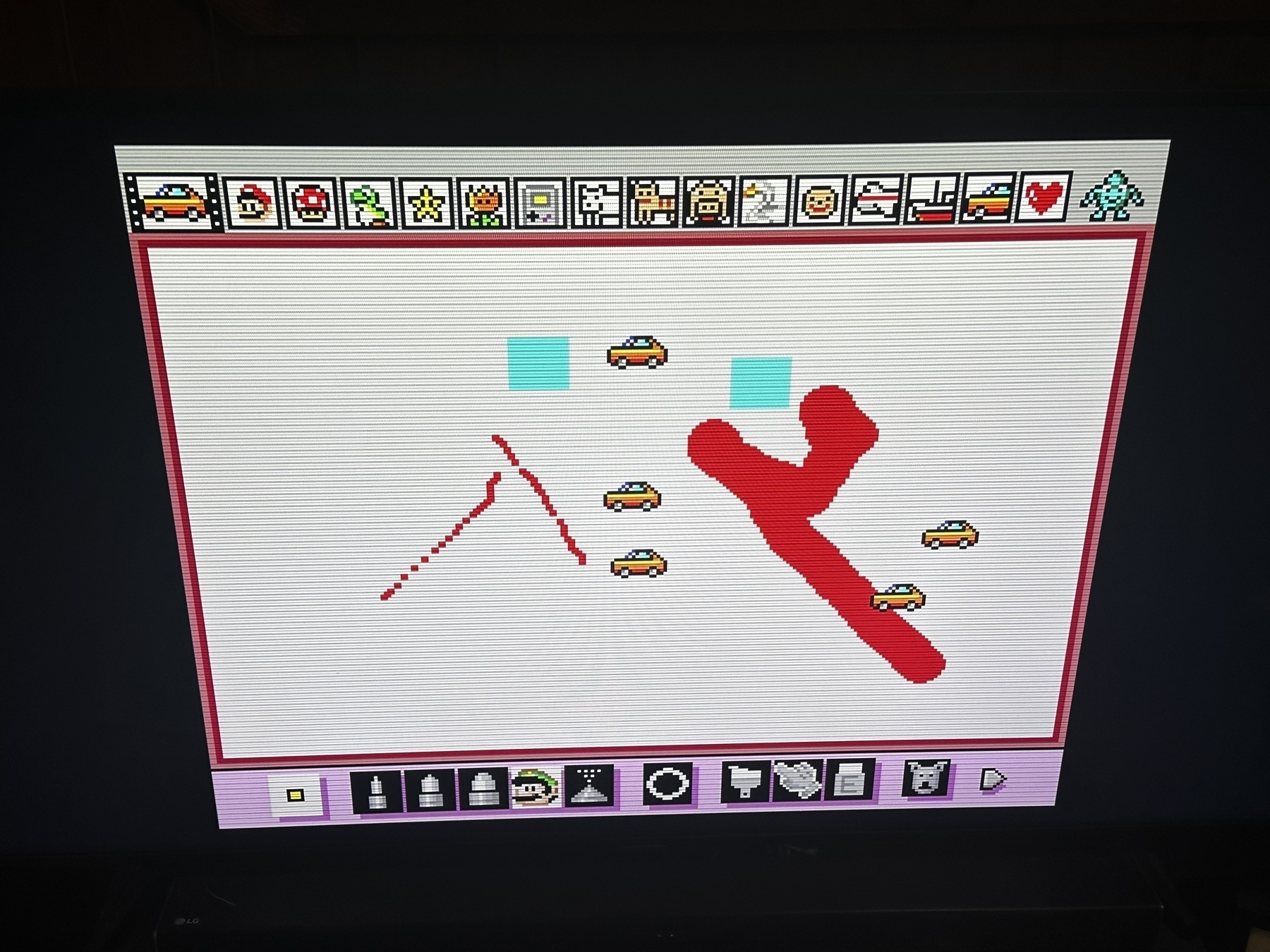
-
Colson Whitehead imagining the post apocalyptic device landscape in Zone One:
His parents were holdouts in the age of digital multiplicity, raking the soil in lonesome areas of resistance: a coffee machine that didn’t tell time, dictionaries made out of paper, a camera that only took pictures.
-
Micro Monday! Brandon’s Mid-Life Reset by @BrandonWrites, a nice blend of topical content and posts about games and music. I enjoyed the recent Friday The 13th The Game post, which gets at the important issue of impermanence and delisting in the age of digital distribution.
-
Why print encyclopedias still matter:
a little voice in the back of my head reasoned that it would be nice to have a good summary of human knowledge in print, vetted by professionals and fixed in a form where it can’t be tampered with after the fact—whether by humans, AI, or mere link rot.
-
Faded gnome (used to have a red cap) keeping watch over the garden

-
Ensuring text accessibility is a key part of my day job, and it’s influenced my personal life, too. I set my blog theme to black text on a white background because that’s the most legible combo. I’ve also gone back to the Light theme on macOS.1
-
I still prefer Dark on iOS due to OLED display ↩︎
-
-
Plants and books basking in Saturday sunlight from open windows
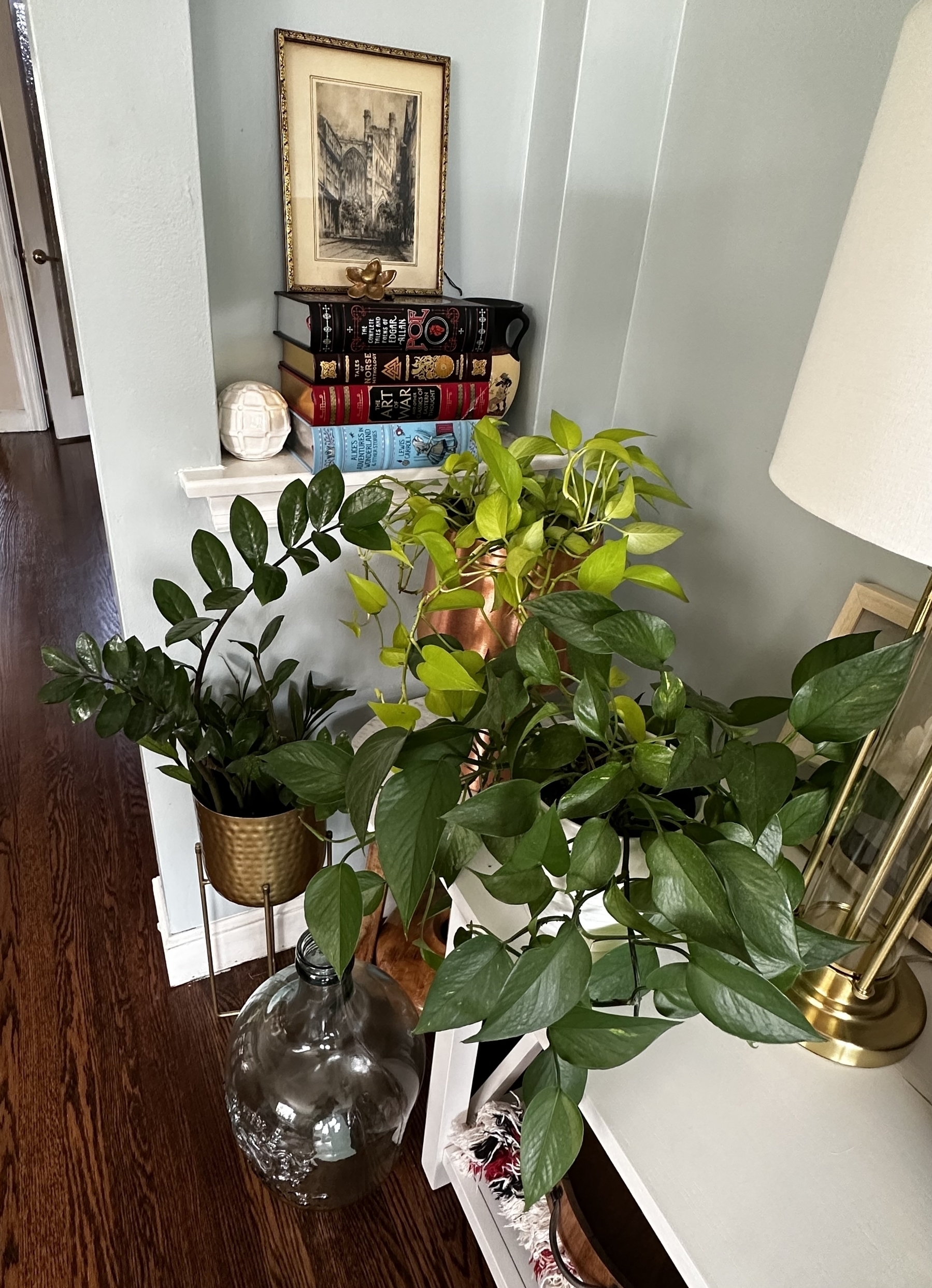
-
The first game I ever had on CD was King’s Quest VI: Heir Today, Gone Tomorrow. Its copy protection was a book of symbols you needed for a riddle. I remember how hard it was to find that info online back then, because I either lost the book or couldn’t find the guide on the disc.
-
The joy of posting
Substack has no public API. That means that if you want to post anything there, you must use the main Substack site. Third-party text editors such as MarsEdit don’t work.1
Thinking outside the browser
That’s bad news for me because I’ve never liked writing big, long posts in a browser tab:
- There’s a lot going on in any browser session—maybe I have ESPN open, alongside YouTube, plus online banking. Distraction is millimeters away. Safari isn’t a writing tool so much as an everything-tool. And a lot of those things are more low-friction than writing.
- Though less of an issue than in the past, browsers sometimes reload the page and force you to reset or switch your context. Re-authentication is needed if history is cleared, too.
- They use a lot of memory, and their overall relatively sluggish performance means they don’t offer as rich and swift a writing environment as a dedicated desktop or mobile app.
This may sound like a relatively minor gripe, but it grated because it felt like I wasn’t getting the most out of my Mac, which has numerous great options for writing and publishing outside the browser.
Struggling with Substack
Moreover, Substack doesn’t just make you use the browser—it requires you to spend a lot of time there. That’s because the email newsletter format puts pressure on every post: It needs to feel worthy of being thrust into the inbox of your subscriber list, or demanding their attention. You can’t just microblog “Lunch (get lunchin’)2” and send it to your list.
If it’s not something meticulous about the Federal Reserve, a lengthy mailbag from a contrarian opinion columnist, or an exhaustive Succession weekly roundup and character ranking3…why bother? You’ll almost certainly get no attention for it despite your effort.
Bridie Dillon captured this feeling succinctly on Medium:
The time I spent writing on Substack I didn’t necessarily enjoy, whereas, I love writing on Medium. The effort I put into every newsletter was incredibly high, for what felt like a very minimal result.
Posting wasn’t fun on Substack, so I won’t be posting there anymore4. But posting here is fun.
Low-stakes and taking Shortcuts
When I began this blog, I did so with the intention that:
- I’d post whenever I felt like and not when it felt like my email list deserved to get something.
- I’d write somewhere other than the browser, for better focus and performance.
- Related to the above, I’d enforce limits on myself—instead of the infinite canvas of the browser, I’d try to compose in the barebones5 UI of the Notes app, in an email client (where for some reason I’d always had a certain freedom in my writing that I didn’t get elsewhere) or best of all, in Tot.
I wanted something low-stakes—and leaving Substack’s email-centric format and finding Tot was essential to getting it.
Tot looks like little on the surface: a plain text editor that costs $20, orders of magnitude more than most people ever pay for any non-game on iOS. It doesn’t support images or emoji. None of that matters because the design enforces limits that unlock creativity:
- Eight dots: There are 8 sections of the app, giving you a way to divide your notes into discrete units and categories, but with a hard numerical limit that forces you to think carefully about such divisions.
- Lightweight: It’s built as a scratchpad. But often I’ll find I write down a few stray thoughts that then evolve quickly into a full-blown blog, in a way that I would never do with a browser or Word or Pages, where whenever I open them I feel like I’m beginning a big paralyzing Writing Ritual rather than just…writing. And when it does morph into a full blown blog, the next two features become invaluable.
- Markdown: Tot automatically applies bold and italic Markdown styling when you use those buttons, plus it supports other Markdown syntax such as linking with a combination of brackets and parentheses.
- Shortcuts: Each Tot dot can be queried through an iOS or macOS Shortcut, meaning you can get that Markdown text and easily send it to a service like Wordpress, Tumblr, or Micro.blog, where it’ll render as gorgeous HTML. So a Shortcut that links Tot to one of these landforms means you‘ve basically got a minimalist dedicated publishing app like MarsEdit on your phone!
Publishing through a Shortcut and seeing all that Markdown text get transformed is fun. It’s hard to explain exactly, but it makes me realize how having nice tools—Tot, Markdown, MarsEdit, Micro.blog—is often as important as having exciting ideas when to comes to regularly blogging.
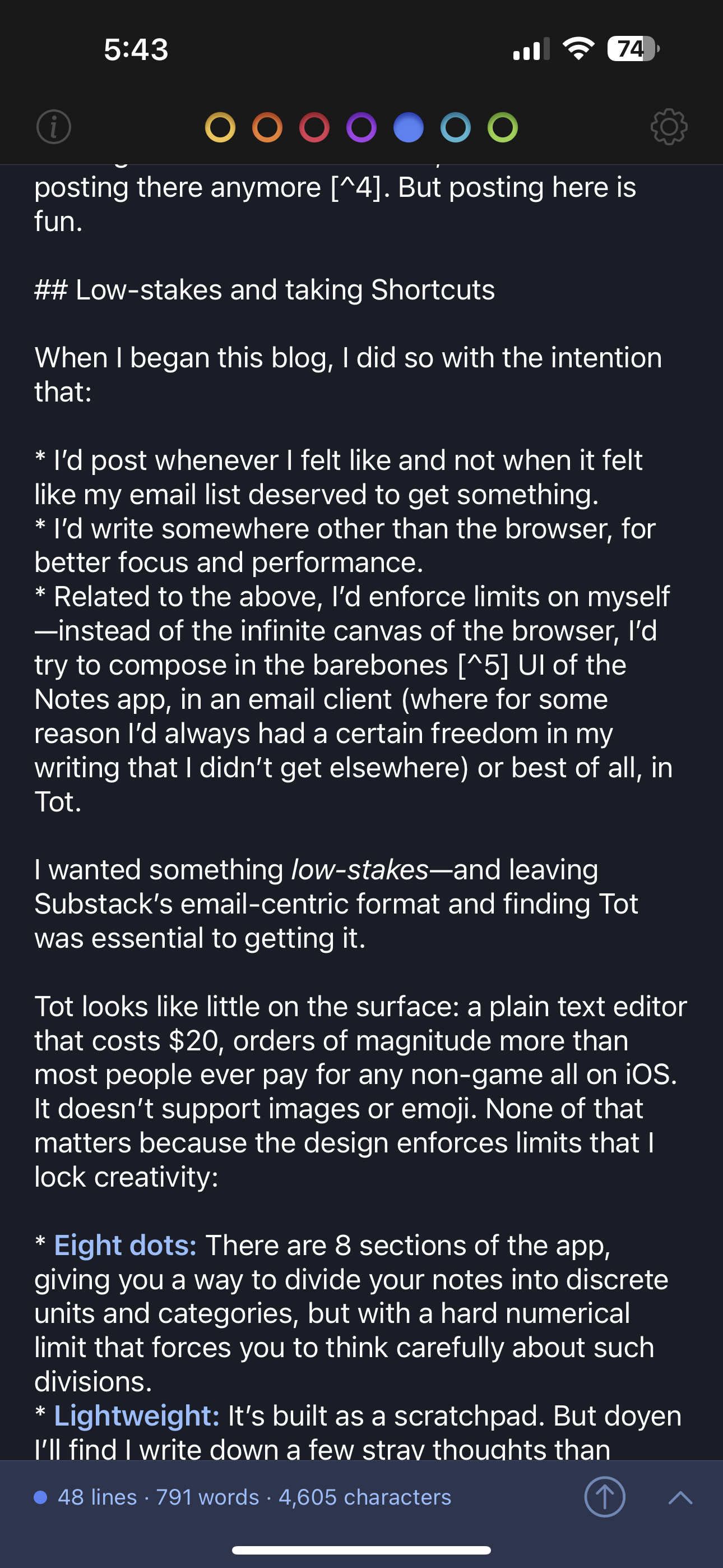
-
MarsEdit can publish to Micro.blog, Tumblr, and others from the desktop. It also has a global keyboard shortcut that lets you “micro post.” ↩︎
-
I love these types of 2006-esque blog entries from pros like Atrios. ↩︎
-
What I found fascinating about prestige Succession #content was how closely it resembled circa 2009 ESPN articles, such as power rankings of college football teams and reader question mailbags. ↩︎
-
However, my podcast still goes through there on the backend. ↩︎
-
BBEdit, the Mac’s quintessential text editor, began as a “barebones” project that eventually became a sophisticated tool—there’s a lesson there in starting simple and iterating from there, instead of trying to build a masterpiece from scratch. ↩︎
-
The Nintendo DS was a haven for point-and-click adventure games:
- Again even featured full-motion video a la a mid-90s Sierra game
- Another Code makes creative use of the DS hardware
These games are from different regions; the DS was region-free.
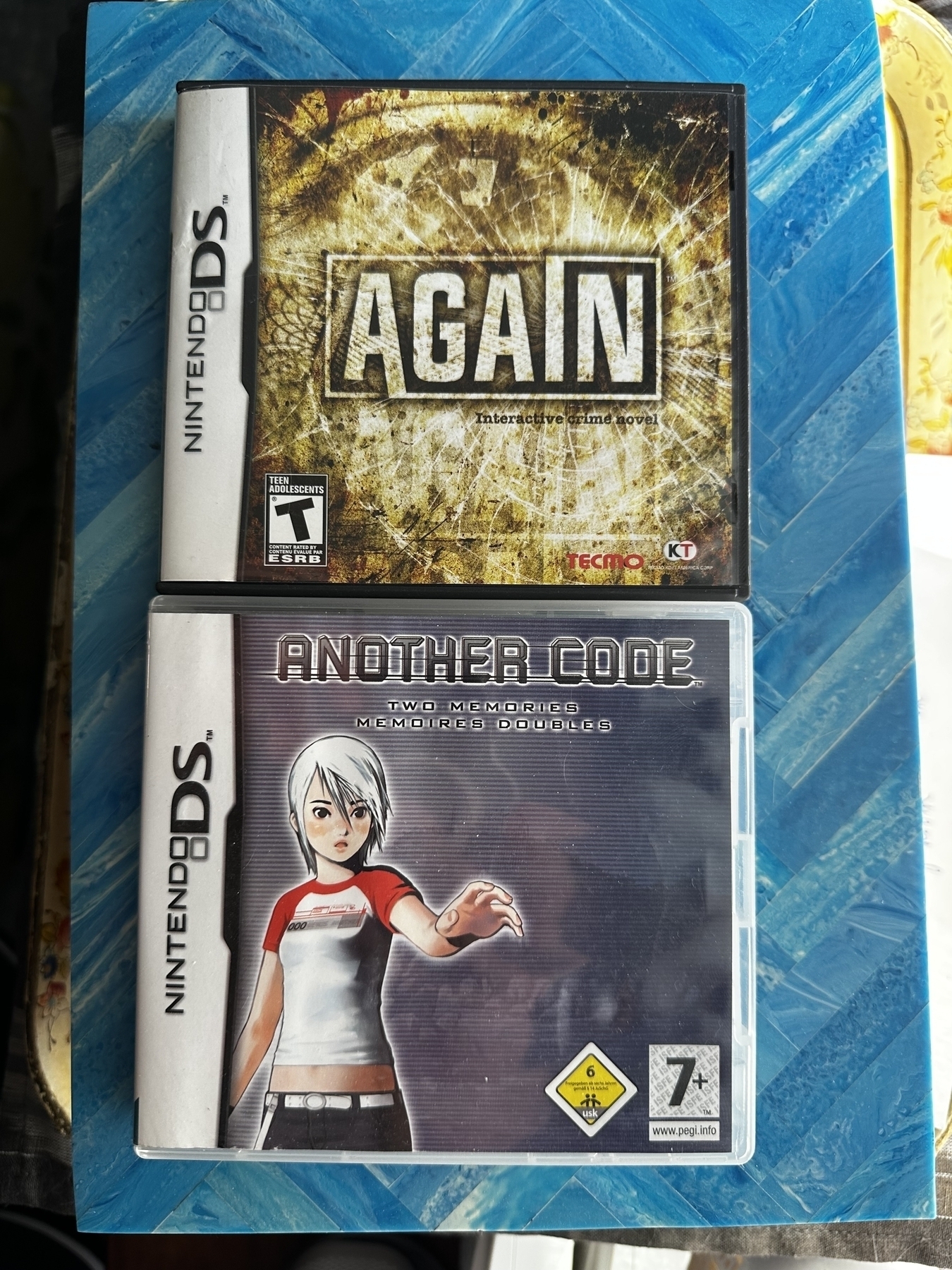
-
Circa 1996, I needed a lot of thick proprietary cords and power supplies to run all the games on this machine (a Genesis plus a Sega CD). This one just plugs into the TV USB port.
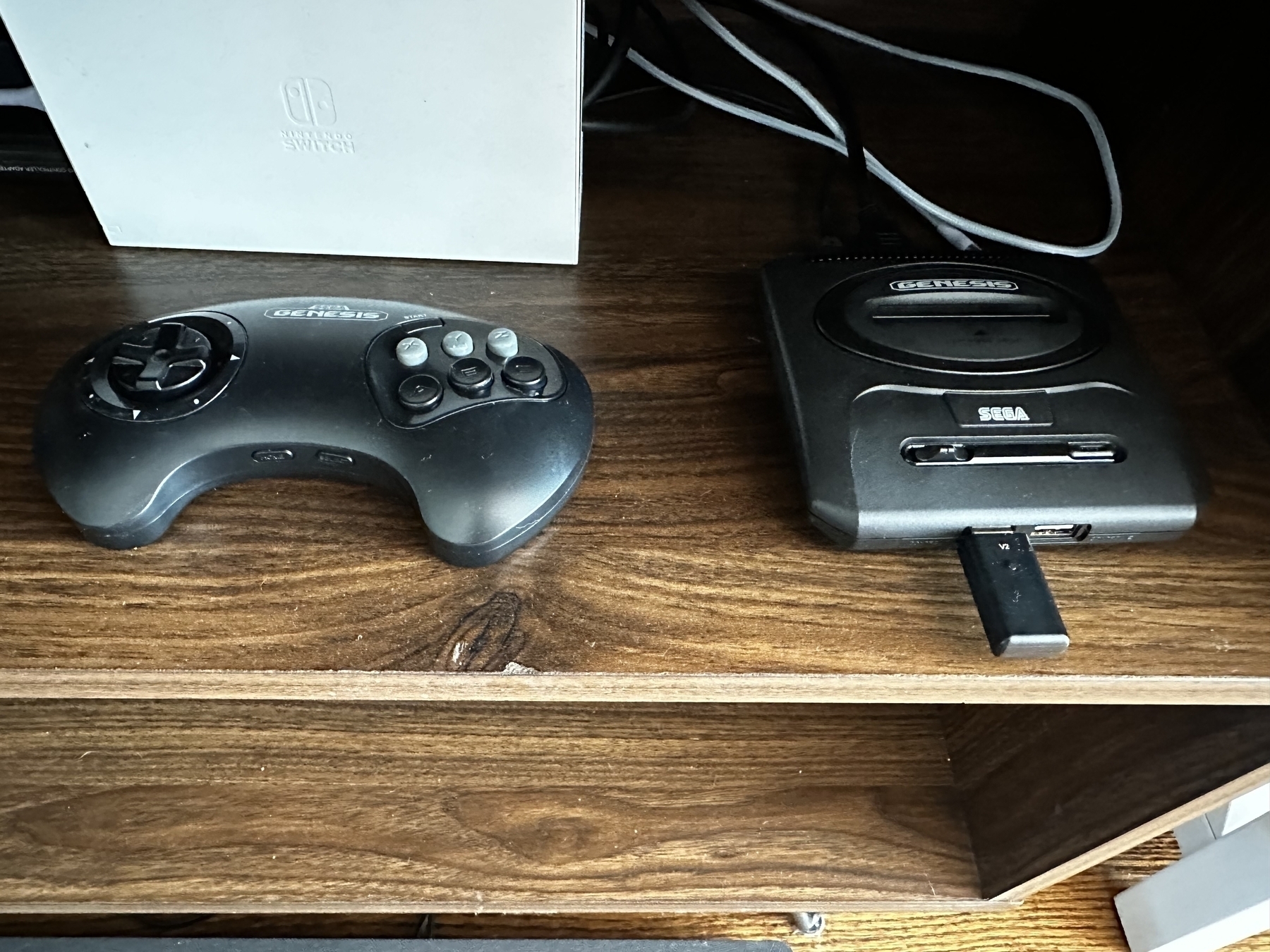
-
Hollywood killed two and almost three super reliable cash cows—cable TV, DVDs, and theaters—because elder millennials binged House of Cards on their overheating 2013 laptops.
-
Bird on a wire

-
Living in the age of captions and subtitles
Closed captioning for TV is relatively ancient technology. The NTSC analog TV specification, released in the 1950s, allows TV-decodeable captions on line 21 1. These captions are the same ones used by VHS tapes and some DVDs 2.
About a decade ago, I learned that these analog captions—which aren’t in the same format as the digital ones you see on streaming shows, Blu-ray-ray Discs, or even more recent-vintage DVDs—at the time required a composite cable input, when being sent from an external source device such as a VCR or optical disc player to a TV. A set of DVDs I had emblazoned with the “CC” logo wouldn’t show any text via HDMI or component cables 3, but would via composite.
But recent players, such as a Panasonic 4K UHD player I got in 2020, can render analog captions on-device and pass them to the TV over HDMI 4. I’m grateful for this functionality, and for captions and subtitles more broadly, because they exemplify accessibility at its best.
Accessibility
Although designed to assist people with hearing issues or who could otherwise not listen to or comprehend the speech in a show, captions provide a richer experience for everyone:
- They serve as an escape hatch from whisper-quiet speech that can’t be turned up without risking getting your ears blown out by a huge on-screen explosion in the next scene.
- They’re the only way to engage with dialogue in languages you don’t know, or that’s delivered in accents or cadences you can’t grasp.
- They often offer descriptions that are colorful, humorous, informative, or artistic on their own terms; for example, a caption I once saw that read “a la De Niro” right before someone did an impression, or any of the art-in-themselves subtitles on Stranger Things, a show whose writers are deeply attentive to how they style their subtitles:
There’s the scene where Henry/Vecna/001 is creating the Mind Flayer. I remember listening to the sound design and it reminded me a lot of the sound design of Arrival. The atonality is meant to get at an alien harshness, so one of the tags I used — and I chose this word because Karli and I wanted to go big; we wanted to bring our A-game — was “[unearthly susurration]”. I chose “susurration” because it’s an alien word that automatically makes you go, Oh, this is unusual, strange, and eerie. But also, I liked the fictive sense of it, like when you say “susurration,” it feels like it’s scraping the inside of your ears. Karli thought it was great but said, “Let’s have ‘unearthly’ do the heavy lifting here. This is a bit much.” And she was dead right!
We always leave captions or subtitles on because our household includes people and visitors who don’t speak English as their first language. The text is invaluable to them.
Reading TV
But others see this text as distracting and even damaging to the aesthetic vision of a show. Writing for The Atlantic, Devon Gordon chronicled an internal monologue he had at seeing everyone around him putting on subtitles for everything:
Because now I’m reading TV, not watching it. Because now, instead of focusing my attention on the performances, the costumes, the cinematography, the painstakingly mixed sound, and how it all works together to tell a story and transport me into an alternate world, my eyes keep getting yanked downward to read words I can already hear. My soul can’t bear the notion of someone watching The Sopranos for the first time and, as Tony wades into the pool, looking down to the bottom of the screen to read [ducks quack]. Subtitles serve an important purpose for people with hearing or cognitive impairments, or for translation from a foreign language. They’re not for fluent English speakers watching something in fluent English.
TV is a visual medium that conveys most of its details in ways other than text. But it’s also, as Gordon adeptly describes, under pressure from sound mixes that bury dialogue. Text offers a comforting way to literally turn down the volume.
And then there’s the issue of “second screens,” 5 that is phones, which draw people’s attention away from the show on the larger screen. Aren’t subtitles, with all their descriptive detail begging to be parsed as in Stranger Things, a way of fighting back against this multitasking?
I’ll keep leaving the captions and subtitles, for this reason and all the others described here.
-
NTSC was designed for interlaced video on CRT TVs, with the picture consisting of individual scan lines. ↩︎
-
Shows like the 1987 TMNT animated series were natively shown on NTSC television with line 21 captions. These captions were preserved on both the VHS tapes and the DVDs made from the scans of those tapes (you can still see the scan lines in the DVD copies when a progressive scan display de-interlaces them ). ↩︎
-
Component video uses three cables instead of the single one in composite, plus it supports progressive scan (composite only supports interlaced scan). ↩︎
-
4K disc players can only output video via HDMI; composite and component inputs aren’t provided. ↩︎
-
Really, they’re more like the “first screen.” ↩︎
-
Why “content creator” is such a bad term:
Union shops such as the Directors Guild have long fought for proper credits recognition, and creator touches a specific, raw nerve. It is imbued with the baggage of the internet and, specifically, a subset of workers whose work is frequently devalued by, exploited by, and subject to the whims of capricious technology platforms. Many creators work on volume, constantly churning out content to make money and stay relevant. The moniker itself, as WGA West President Meredith Stiehm made clear in a statement, is “diminishing.”
-
Drinking some really yummy margaritas next to the interstate feeder road 🍹🚗

